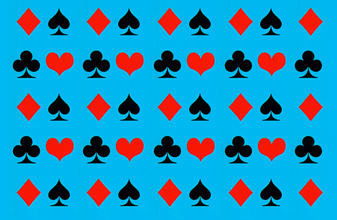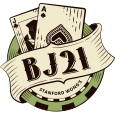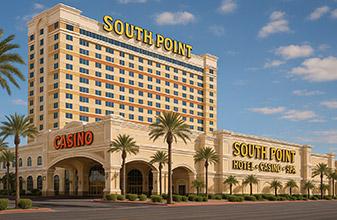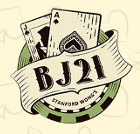Professional Video Poker by Stanford Wong chapter 3

PREFACE | CHAPTER 1 | CHAPTER 2 | CHAPTER 3 | CHAPTER 4
(Professional Video Poker by Stanford Wong was written quite some time ago, and is now out of print. It contains some information that is no longer current. It is reprinted here in its entirety as a historical reference and a reminder of how video poker used to be. Current video poker products are available through our online catalog.)
CHAPTER 3
FINE POINTS OF 8-5 PROGRESSIVE STRATEGY
The strategy for 8-5 progressive machines presented in chapter 2 is designed for speed, and is only approximately accurate. This chapter explains the approximations. If by chance you value accuracy over speed you will treasure the material in this chapter, but my guess is you will decide (as I have) that you can tolerate minor playing errors to get in more hands per hour.
Table 14
Breaking a Pat Flush
Cards Held Cards Discarded
ss A-HC-HC ss small-small
ss A-HC-10 ss small-small
ss K-Q-J
ss K-Q-J
ss K-Q-10
ss K-Q-10
ss K-J-10
ss K-J-10
ss Q-J-10
ss Q-J-10
ss Q-J-10
ss 9-small
ss small-small
ss 9-small
ss small-small
ss 9-small
ss small-small
ss 9-small
ss 8-small
ss small-small
BEP
$5979
6111
5916
5845
6051
5980
6051
5980
5991
5920
5849
K Q J 9 6.........................
2853 5 SF
The payoff for a straight flush is 50 bets. With K-Q-J-10-9 suited, the expected value of discarding the 9 and drawing one card to try for the royal is more than 50 bets if the quarter jackpot is over $2852.50. This is the only BEP in table 13 that is not a weighted average of several different BEPs.
6003 5 flush
The $6003 is a weighted average of several numbers. The precise BEP for holding a pat flush and drawing two cards to a royal flush depends on the values of cards held. Drawing to K-Q-J has a higher expectation than drawing to A-Q-J because one more straight is possible. Drawing to A-Q-J has a higher expectation than drawing to A-Q-10 because ending up with a high pair is more likely.
The BEP can also be a function of the discards. For example, drawing to Q-J-10 has a higher expectation if the discards are 2-3 than if they are 2-8 because a queen-high straight is less likely if an 8 is discarded.
Table 14 lists the various BEPs that could be used to be more precise on when to draw to three of a straight flush rather than standing pat on a flush. For example, to justify holding A-HC-HC suited and discarding two other cards of the same suit rather than standing pat on the flush, the jackpot should be above $5979. I have rounded off these BEPs to the nearest dollar. The overall weighted average is $6003.
K Q J J J.........................
Table 15
Breaking Trips
Cards Held Cards Discarded BEP
ss A-HC-HC HC-HC $4964
ss A-HC-10 HC-HC 5106
ss K-Q-J HC-HC 4832
ss K-Q-10 HC-HC 4975
ss K-J-10 HC-HC 4975
ss Q-J-10 HC-HC 4844
ss A-HC-10 10-10 5006
ss K-Q-10 10-10 4875
ss K-J-10 10-10 4875
ss Q-J-10 10-10 4744
4964 3 trips
The expected value of drawing to three of a kind is 4.24 bets. The expected value of drawing to three of a royal depends on the size of the jackpot of course, but it
also depends on which three cards of a royal are held, and whether the trips are high cards or 10s, as shown in table 15. Discarding a high pair means less chance of ending up with a high pair, compared to discarding a pair of 10s. Thus the BEP depends on which three of the royal are contained in the hand and whether the trips are high cards. The weighted average of the BEPs in table 15 is $4964.
There are two corrections in the 1998 printing of this book. The $4964 for the first row on page 78 was incorrectly stated as $4864 in previous printings. Correcting this $100 error resulted in a $30 correction in the weighted average because A-HC-HC hands with
trips make up 30% of the hands with trips that also contain three cards of a royal; verifying that 30% is a fun exercise left to the reader. This $30 correction changed the weighted average from $4934 to $4964. It is coincidence that both corrections produced the number $4964.
K Q J 10 9.........................
Table 16
Breaking a Pat Straight
Cards Held Discarded BEP
ss A-HC-HC HC-10 $4557
ss A-HC-10 HC-HC 4696
ss K-Q-J A-10 4446
ss K-Q-J 10-9 4442
ss K-Q-10 A-J 4585
ss K-Q-10 J-9 4581
ss K-J-10 A-Q 4585
ss K-J-10 Q-9 4581
ss Q-J-10 A-K 4454
ss Q-J-10 K-9 4470
ss Q-J-10 9-8 4446
4557 5 straight
A pat straight is worth 4 bets. Should you break it? The value of drawing to three of a royal flush depends on which three cards are held, whether any of the discards are high cards, and where in the straight the royal-flush cards are located, as shown in table 16. The weighted average BEP is $4557.
Q J 10 9 6.........................
Table 17
Discarding the 9
From ss Q-J-10-9
Fifth Card BEP
A $3952
Q or J 3964
10 3944
9 3969
smaller 3929
3942 4 ss Q-J-10-9
The fifth card originally in this hand is not a king or 8, because such a hand would be evaluated as a pat straight. Likewise the fifth card is not the same suit, because then the hand would be a flush. The BEP for deciding whether to draw one card to try for a straight flush or two cards to try for a royal flush depends on whether the fifth original card is an ace, another high card, a 10, a 9, or a smaller card. The possibilities are listed in table 17. The weighted average is $3942.
A K 10 A 1.........................
Table 18
Two Pair or Three of a Royal
Cards Held Discarded BEP
ss A-HC-HC no 10 $2626
ss A-HC-10 no 10 2769
ss A-HC-10 10 2719
ss K-Q-J no 10 2495
ss K-Q-10 no 10 2638
ss K-Q-10 10 2588
ss K-J-10 no 10 2638
ss K-J-10 10 2588
ss Q-J-10 no 10 2506
ss Q-J-10 10 2456
FINE POINTS OF 8-5 PROGRESSIVE STRATEGY
4 two pair
The expected value of drawing to two pair is 2.51064 no matter what the pair. In video poker, unlike regular poker, a high two pair is worth the same as a low two pair. The BEP for deciding whether to break up two pair to draw to three cards of a royal flush depends on which three of a royal are held and whether a 10 is discarded, as shown in table 18. The weighted average is a jackpot of $2626. Drawing to two pair is less desirable than drawing to three of a royal flush unless the quarter jackpot is below $2626, in which case drawing one card to two pair is better.
If you sometimes play video poker with quarter jackpots under $2626, you can rewrite table 13 with two pair ahead of three of a royal flush, and a BEP of $2626 in front of two pair.
If a full house pays 6 instead of 8 as in the Atlantic City video-poker machines discussed in chapter 4, the weighted-average BEP is $2396.
K Q 10 9 7.........................
Table 19
Four of a Straight Flush
or Three of a Royal
SF Draw Fifth Card BEP
ss K-Q-10-9 A $2374
ss K-Q-10-9 K or Q 2385
ss K-Q-10-9 10 2365
ss K-Q-10-9 small 2350
ss K-J-10-9 A 2374
ss K-J-10-9 K or J 2385
ss K-J-10-9 10 2365
ss K-J-10-9 small 2350
ss K-Q-J-9 A 2325
ss K-Q-J-9 K or Q or J 2333
ss K-Q-J-9 small 2301
ss Q-J-10-8 A 2247
ss Q-J-10-8 K 2263
ss Q-J-10-8 Q or J 2354
ss Q-J-10-8 10 2234
ss Q-J-10-8 small 2219
4 SF
Drawing to three of a royal flush is more profitable than drawing to four of a straight flush if the progressive jackpot is high. For low jackpots, drawing to four of a straight flush might be preferred. The BEP for Q-J-10-9 suited is 3942, which is high enough that I gave that hand a line of its own in table 13. For other draws to four of a straight flush, the BEPs are smaller than any jackpots I expect you to be playing; so I did not give them lines of their own. They are listed in table 19.
Here is an example of the meaning of the numbers in table 19: If you are dealt K.-Q.-10.-9.-A., and the quarter jackpot is above $2374, try for a royal by holding only the K.-Q.-10. rather than holding the 9. with it and drawing for a straight flush. For impossibly high jackpots, drawing to two of a royal might be preferred over drawing to four of a straight flush. For example, with Q-J-9-8 suited and a small card of another suit, holding the Q-J suited is preferred if the jackpot is above $35,968, a jackpot that just is not going to happen on a quarter video-poker machine.
K J K 4 3
Q J 8 7 6
.........................
.........................
2 high pair
Likewise for jackpots so large they never happen, it might be advisable to break up a high pair to draw to two of a royal flush. An example is: Holding K.-J. and discarding a king and two small cards of another suit can be justified if the jackpot is above $21,375. But jackpots do not get that high on quarter video-poker machines.
4 flush
If the jackpot gets above $11,066, drawing to Q-J suited is better than drawing to four of a flush. The chance of a quarter jackpot getting that high is so small that I did not put a number in front of the draw to four of a flush in table 13.
Joel Friedman, who figured out how to get an edge at video poker long before I did, told me he saw a quarter jackpot higher than that once, but it was a special circumstance. On 22 November 1982 Joel visited the Playboy casino in Atlantic City to play a bank of five-coin dollar 6-5 video poker machines with a jackpot over $31,000. Joel found that those machines had been replaced by five-coin quarter machines. The monster jackpot was carried over, and Joel could try for it for five quarters instead of five dollars.
Table 20
K-Q-J-10 or Two of a Royal
Cards Held Fifth Card BEP
ss K-Q small $7033
ss K-J small 7033
ss Q-J 8 6802
ss Q-J smaller 6742
ss K-10 small 9752
ss Q-10 8 9521
ss Q-10 smaller 9461
ss J-10 8 9230
ss J-10 7 9170
ss J-10 smaller 9090
K Q J 10 7
K Q 9 8 8
.........................
.........................
4 K-Q-J-10
The value of drawing to K-Q-J-10 of assorted suits is 0.87234 bets. If the jackpot gets high enough, drawing to two of a royal flush is better han drawing to four of a straight.
Table 20 lists the BEPs for breaking up this hand to draw to two of a royal flush, assuming that all three discards are of suits different from the two of the royal. If one of the discards is the same suit as the cards held, the BEP is higher by $281.
The BEPs in table 20 are so high that I have not bothered to figure the weighted average for inclusion in table 13.
5640 2 low pair
The value of drawing to a low pair is 0.8135 bets. This is less than the value of drawing to K-Q-J-10 of assorted suits, which is why if you are dealt K-Q-J-10-10 you should hold K-Q-J-10.
Drawing to ss HC-HC is more attractive than drawing to a low pair if the jackpot gets high enough. Finding the weighted average of all possible hands that have this choice is complicated. The BEP depends on the value of the higher of the two high cards held because the higher it is, the fewer straights are possible. The BEP also depends on which cards are discarded. Discarding one of the same suit reduces the probability of a flush, and possibly reduces the probability of a straight flush. Discarding one or more cards high enough to fit into a straight reduces the probability of a straight. For example, the BEP for deciding whether to draw to a low pair or to Q-J suited depends on how many 10s, 9s, and 8s are discarded, whether an ace or king is discarded, and which if any of the discards is the same suit as the Q-J.
Table 21
Low Pair or ss HC-HC
Hold Discard BEP
ss A-HC HC-10-10 $6117
ss A-HC HC-small-small 5997
ss A-HC 10-10-small 5942
ss A-HC 10-small-small 5862
ss A-HC small-small-small 5782
ss K-Q A-10-10 5906
ss K-Q A-9-9 5786
ss K-Q A-small-small 5626
ss K-Q J-9-9 5826
ss K-Q J-small-small 5706
ss K-Q 10-10-9 5771
ss K-Q 10-10-small 5731
ss K-Q 10-9-9 5691
ss K-Q 10-small-small 5571
ss K-Q 9-9-small 5571
ss K-Q 9-small-small 5491
ss K-Q small-small-small 5411
ss K-J A-10-10 5906
ss K-J A-9-9 5786
ss K-J A-small-small 5626
ss K-J Q-9-9 5826
ss K-J Q-small-small 5706
ss K-J 10-10-9 5771
ss K-J 10-10-small 5731
Table 21 continued
Hold Discard BEP
ss K-J 10-9-9 5691
ss K-J 10-small-small 5571
ss K-J 9-9-small 5571
ss K-J 9-small-small 5491
ss K-J small-small-small 5411
ss Q-J A-10-10 5695
ss Q-J A-9-9 5575
ss Q-J A-8-8 5415
ss Q-J A-small-small 5255
ss Q-J K-9-9 5615
ss Q-J K-8-8 5495
ss Q-J K-small-small 5335
ss Q-J 10-10-9 5600
ss Q-J 10-10-8 5560
ss Q-J 10-10-small 5520
ss Q-J 10-9-9 5520
ss Q-J 10-8-8 5340
ss Q-J 10-small-small 5280
ss Q-J 9-9-8 5400
ss Q-J 9-9-small 5360
ss Q-J 9-8-8 5320
ss Q-J 9-small-small 5200
ss Q-J 8-8-small 5200
ss Q-J 8-small-small 5120
ss Q-J small-small-small 5040
Q J 9 10 6.........................
Table 22
Q-J-10-9 or ss HC-HC
Hold 5th Card Discard ss BEP
ss A-HC ace 9 $6252
ss A-HC ace none 5971
ss Q-J ace 9 5892
ss Q-J ace none 5509
ss Q-J small 9 5697
ss Q-J small small 5595
ss Q-J small none 5314
I have worked out all the possible hands involving decisions between drawing to a low pair and drawing to ss HC-HC. The weighted-average BEP is $5640. Some of the possible hands are listed in table 21. Those listed are for discards of different suits from the ss HCHC. You can recreate the rest of the BEPs yourself by adding amounts that depend on which of the discards is the same suit as the ss HC-HC. If the discards reduce the number of possible straight flushes by two, the BEP is higher by $384. If the discards reduce the number of possible straight flushes by one, the BEP is higher by $333. If the discards contain one of the same suit as the ss HC-HC but that card does not fit into a straight flush, the BEP is higher by $281.
Note that this $5640 applies only to ss HC-HC. It does not apply to ss HC-10. The average BEP for that draw is much higher — probably over $8000.
Q J 10 9 7.........................
Table 23
Q-J-10-9 or ss HC-10
Hold 5th Card Discard ss BEP
ss A-10 ace 9 $8971
ss A-10 ace none 8690
ss Q-10 ace 9 8611
ss Q-10 ace none 8227
ss Q-10 small 9 8416
ss Q-10 small small 8313
ss Q-10 small none 8032
ss J-10 ace 9 8371
ss J-10 ace none 7936
ss J-10 7 9 8236
ss J-10 smaller 9 8176
ss J-10 7 none 7801
ss J-10 smaller smaller 8022
ss J-10 7 7 8133
ss J-10 smaller none 7741
5577 4 Q-J-10-9
The expected value of drawing to this holding is 0.80851 bets; so if the fifth card makes a pair, drawing to the pair is better by at least 0.005 of a bet.
The BEP depends on which high cards have the same suit, the value of the fifth card, and whether a third card is the same suit as the ss HC-HC, as shown in table 22. The weighted-average BEP of table 22 is $5577.
Table 23 lists the BEPs for holding a high card and a 10 of the same suit. These numbers are so high that I have not averaged them into the BEP for Q-J-10-9.
Table 24
J-10-9-8 or ss HC-J
Hold
ss A-J
ss A-J
ss K-J
ss K-J
ss K-J
Discard ss
none
9 or 8
9
8
none
BEP
$4482
4764
4584
4532
4251
Table 25
J-10-9-8 or ss J-10
Hold 5th Card Discard ss BEP
A9
A8
A none
K9
K8
none
9
ss J-10
ss J-10
ss J-10
ss J-10
ss J-10
ss J-10
ss J-10
ss J-10
ss J-10
ss J-10
$6882
6831
6448
6942
6891
6507
6667
6616
6514
6232
K
small
small
small
small
8
small
none
A J 10 9 8.........................
4484 4 J-10-9-8
The weighted-average BEP of $4484 applies to draws to the jack and another high card of the same suit. The only possibilities are ss A-J and ss K-J; if you have a queen you have a straight. And of course the BEP depends on whether one of the discards is the same suit. The possibilities are shown in table 24.
Table 25 contains the BEPs for draws to ss J-10. The weighted average BEP for drawing to ss J-10 instead of drawing to J-10-9-8 is 6580.
Table 13 does not contain a number for drawing to ss J-10 out of a holding of J-10-9-8. The break-even points are so high that table 13 says always draw to J-10-9-8 when the alternative is drawing to J-10 of the same suit.
Q J 9 6 5.........................
Table 26
ss Q-J-9 or ss Q-J
Discards BEP
A-8 $3204
A-small 3444
K-8 2964
K-small 3204
8-small 3045
small-small 3285
3246 3 ss Q-J-9
For low jackpots, drawing to this combination is better than drawing to ss Q-J, as shown in table 26. The BEP is $3246, the weighted average of the BEPs of table
27. You can simplify table 13 by omitting this line. The conditional cost of this simplification is 0.005% of the amount by which the jackpot is less than $3246. For example if the jackpot is $3000, drawing to ss Q-J instead of to ss Q-J-9 costs only 1.2 ents per hand containing those cards. Draws to three-card straight flushes with two high cards and gaps of two cards, such as ss Q-J-8, are inferior to draws to two of a royal for all jackpots with positive expectations.
Q 10 9 8 7.........................
Table 27
10-9-8-7 or ss HC-10
Cards Held ss discards BEP
ss A-10 none $5692
ss A-10 9 or 8 or 7 5973
ss K-10 none 5401
ss K-10 9 5733
ss K-10 8 or 7 5682
ss Q-10 none 5170
ss Q-10 9 5554
ss Q-10 8 5502
ss Q-10 7 5451 5573 4 consec no HC
Those fours-in-a-row headed by high cards are treated individually. Drawing one card to 4-3-2-ace of mixed suits is not as profitable as drawing four cards to the ace. So this heading relates only to four consecutive cards headed by the 10, 9, 8, 7, 6, or 5. Drawing one card to any of them is worth 0.681 of a bet. Only one of them, 10-9-8-7, is affected by the $5573; the others cannot possibly contain two cards of a royal flush.
Thus the BEP applies when the four-in-a-row is headed by the 10 and the fifth card is a high card of the same suit as the 10. The BEP is a function of which high card is held with the 10, and which, if any, of the 9-8-7 is the same suit as the HC-10. The BEPs are shown in table 27.
In an early version of this book, the table that is now 27 included ss J-10. That was a mistake because that hand is more valuable as a straight.
J 10 9 7 4.........................
Table 28
ss J-10-9 or ss J-10
Discards BEP
A-K-9 $5630
A-9-7 5491
A-9-small 5731
K-9-7 5251
K-9-small 5491
9-7-small 5332
9-small-small 5572
5531 3 ss J-10-9
The BEP for deciding whether to hold J-10-9 of the same suit or just the J-10 depends on whether the discards contain an ace, king, or 7. The break-even points are shown in table 28. The weighted average of those BEPs is $5531.
Q 10 8 K 6.........................
Table 29
Three of a Straight Flush
or ss HC-10
Cards Held Discarded BEP
ss Q-10-9 A-K $3901
ss Q-10-9 A-8 3762
ss Q-10-9 A-smaller 4002
ss Q-10-9 K-8 3522
ss Q-10-9 K-smaller 3762
ss Q-10-9 8-smaller 3604
ss Q-10-9 small-small 3844
ss J-10-8 A-K 3850
ss J-10-8 A-Q 3610
ss J-10-8 A-7 3391
ss J-10-8 A-smaller 3631
ss J-10-8 K-7 3471
ss J-10-8 K-smaller 3711
ss J-10-8 Q-7 3231
ss J-10-8 Q-smaller 3471
ss J-10-8 7-smaller 3232
ss J-10-8 small-small 3472
3656 3 SF 1 gap 1 HC
The high card is part of the three-card straight flush.
The value of a high card is slightly more than the value of having one more way to make a straight. For example, the value of drawing to ss J-9-8 is about 0.003 of a bet higher than the value of drawing to ss 10-9-8. In other words, a gap in a possible straight is a negative that is canceled out by the presence of a high card.
The three holdings that are three of a straight flush with one gap and one high card are ss Q-10-9, ss J10-8, and ss J-9-8. Only the first two contain possible three-card draws to ss HC-10. The BEPs depend on the values of the discards, and are shown in table 29. The weighted average of these BEPs is $3656.
J 10 8 7 6.........................
Table 30
Three Consecutive ss
or ss HC-10
3-card ss ss HC-10 BEP
ss 8-7-6 ss K-10 $3259
ss 8-7-6 ss Q-10 2967
ss 8-7-6 ss J-10 2736
ss 7-6-5 ss J-10 2896
ss 6-5-4 ss A-10 3930
ss 6-5-4 ss K-10 3559
ss 6-5-4 ss Q-10 3187
ss 6-5-4 ss J-10 2816
ss 5-4-3 ss A-10 3630
3280 3 SF consec no deuce
The highest hand in this category is ss 10-9-8, and the lowest is ss 5-4-3. The value of drawing to this group of cards is at most 0.597 bets; that value comes when the discards contain no high cards and no cards that could fit into a straight. Thus drawing two cards to try to make a straight flush is not as profitable as most video poker beginners seem to think.
Table 30 contains the distinguishably different hands in which you have to choose between ss HC-10 and three consecutive cards in another suit. The weighted average BEP is $3280.
The hand ss 4-3-2 is not included in this category because $3280 grossly overstates its BEP. The BEP for ss 4-3-2 is $1661 or less; the $1661 applies when the other two cards are ss A-10.
A 10 K Q 7.........................
Table 31
Four of Ace-High Straight
or ss HC-10
Cards Held Discards BEP
ss A-10 HC, HC, ss small $2635
ss A-10 HC, HC, offsuit small 3084
ss K-10 A, HC, ss 9 3185
ss K-10 A, HC, ss smaller 3074
ss K-10 A, HC, offsuit 9 2852
ss K-10 A, HC, offsuit smaller 2792
ss Q-10 A, K, ss 9 2945
ss Q-10 A, K, ss 8 2834
ss Q-10 A, J, ss 8 2894
ss Q-10 A, K, ss smaller 2702
ss Q-10 A, J, ss smaller 2782
ss Q-10 A, K, offsuit 9 2561
ss Q-10 A, K, offsuit 8 2501
ss Q-10 A, J, offsuit 8 2561
ss Q-10 A, K, offsuit smaller 2421
ss Q-10 A, J, offsuit smaller 2501
ss J-10 A, K, ss 8 2594
Table 31 continued
Cards Held Discards BEP
ss J-10 A, Q, ss 8 2654
ss J-10 A, K, ss 7 2463
ss J-10 A, Q, ss 7 2542
ss J-10 A, K, ss smaller 2331
ss J-10 A, Q, ss smaller 2411
ss J-10 A, K, offsuit 9 2270
ss J-10 A, K, offsuit 8 2210
ss J-10 A, Q, offsuit 8 2270
ss J-10 A, K, offsuit 7 2130
ss J-10 A, Q, offsuit 7 2210
ss J-10 A, K, offsuit smaller 2050
ss J-10 A, Q, offsuit smaller 2130
4 ace-high straight
This is a draw to an ace plus any three of K-Q-J-10. The expected value of drawing to A-K-Q-J is 0.596, and the expected value of drawing to A-HC-HC-10 is 0.532.
The BEP for deciding between drawing to four cards of an ace-high straight and drawing to ss HC-10 depends on the high card, whether the fifth card is the same suit, and whether that fifth card fits into a straight with the HC-10. These BEPs are shown in table 31.
K Q J 7 6.........................
Table 31 reflects two things. First, the value of drawing three cards to try for a royal is almost insensitive to the amount of the jackpot; the expectation rises by only five cents per thousand dollars of jackpot. Second, the smaller the high card held with the 10 the greater the likelihood of making a straight; this means the smallest BEPs are for holding J-10, and the largest BEPs are for holding ace-10.
The weighted-average BEP for ace-high straight is $2696. If you want to play video poker with jackpots that low, rewrite table 13 with 4 ace-high straight moved ahead of 2 ss HC-10, and with the BEP equal to $2696.
3 K-Q-J
The expected value of drawing to K-Q-J of assorted suits is 0.515 bets if the discards are both smaller than 9, and 0.500 if one of the discards is a 9.
KJ 6 5 4
2 HC-HC
The best pair of high cards to hold is Q-J, with K-J and K-Q tied for next best. After that comes a tie between A-K, A-Q, and A-J.
Drawing three cards to K-Q, K-J, or Q-J is better than drawing four cards to a single high card.
With A-K, A-Q or A-J of mixed suits, there is almost no difference between drawing three cards and drawing four cards to the face card. The chance of hitting a royal flush on a four-card draw is worth less than half a cent per $1000 of jackpot. The decision on whether to draw three cards to A-HC or four cards to the HC depends on what the discards do to the chances for a flush or a straight. While differences do exist, they are so minor that it is not worth spending time pondering them.
When scrutinizing a hand for high cards, look for face cards first. If you have an ace and a face card of a different suit, the important thing is to hold the face card. Whether you hold the ace with it does not matter much. I find I play quicker if I do not worry about off-suit aces.
.........................J 9 8 4 3
.........................9 8 6 4 2
1 HC
The best high card to hold is a jack. Next best is a queen. Next best is a king. Then comes ace. The reason is the number of straights that can be made with each card.
3 SF
Drawing to three cards of a straight flush with one gap and no high cards (example: 9.-8.-6.) is worth about the same as drawing four cards to a high card or three cards to HC-HC. The differences depend on which high cards are involved, whether the discards are the same suit as the high card, and whether any of the discards fit into a straight with the card or cards held.
Suppose you have the following hand dealt to you: K.-J.-7.-5.-4.. Drawing to the K-J is worth 0.493 times your bet. Drawing to the lonesome jack is worth 0.465 plus .00000449 times the jackpot; for a jackpot of $4000, the value of drawing to the jack is 0.483 times your bet. The value of drawing to the 7.-5.-4. is 0.494 times your bet. If the example were changed so the high cards were A.-J., then drawing to the three of a straight flush with one gap would be the best play. If the example were changed so the high cards were Q.-J., then the best play would be hold the Q-J.
98542
A draw to three cards of a straight flush that has only one way to make a straight (such as ss 9-7-5) is inferior to draws to one or two high cards.
I decided to put the two-card draw to a straight flush below the four-card draw to a high card after playing a lot of video poker. I found that looking for three-card straight-flush draws took too much time. Figuring how many straights were possible took too much time. I was spending too much time sorting out differences in expected values that were too small to worry about. Looking at the high cards and ignoring the low cards makes for faster play. This is the main category of deviation from perfect play.
Cost of Errors
On decisions between holding three of a royal flush and holding anything else, the cost of an error is 74 cents per $1000 of difference between the actual quarter jackpot and the BEP.
On decisions between holding two of a royal flush and holding anything else, the cost of an error is 5 cents per $1000 of difference between the actual quarter jackpot and the BEP.











Please log in or register to leave a comment